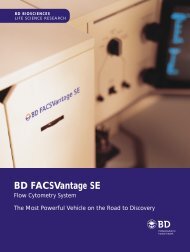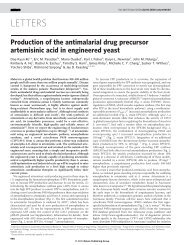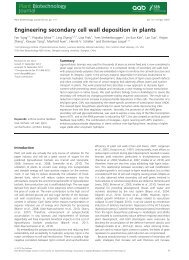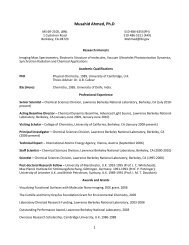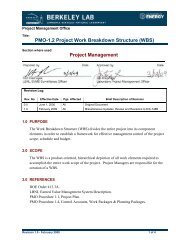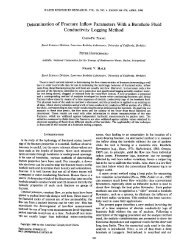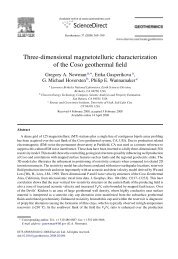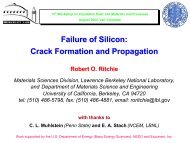LBNL Respiratory Protection Program - Lawrence Berkeley National ...
LBNL Respiratory Protection Program - Lawrence Berkeley National ...
LBNL Respiratory Protection Program - Lawrence Berkeley National ...
You also want an ePaper? Increase the reach of your titles
YUMPU automatically turns print PDFs into web optimized ePapers that Google loves.
To return a respirator through the mail system, employees are instructed to put the respirator into<br />
a sealed zip-lock bag and then into a large manila envelope addressed to: "IH Lab, MS26B0097<br />
". Employees may also drop masks off at B26, Room 24A.<br />
G. Maintenance and Care - Inspection, Cleaning, and Sanitizing<br />
In addition to the employee's inspection prior to each use, every respirator shall be routinely<br />
inspected by the EH&S Industrial Hygiene Group when it is returned to the Industrial Hygiene<br />
Lab. This involves examining the straps, hoses, valves, gaskets, mask body, and<br />
filters/cartridges, as required. Defective or worn parts will be replaced. Parts will not be<br />
interchanged between different brands of respirators, as this would void their NIOSH approval.<br />
Field cleaning of respirators shall be performed by the user by washing the entire respirator (after<br />
removing cartridges and filters) with soap and warm water in a clean area on a regular basis.<br />
When the respirator requires a thorough cleaning and sanitizing, it shall be returned to the EH&S<br />
Industrial Hygiene Group and exchanged for a sanitized mask. Sanitary wipes can be used for<br />
additional cleaning before each use.<br />
The cleaning and sanitizing by the EH&S Industrial Hygiene Group shall be performed with the<br />
use of a respirator washer/dryer system manufactured by Steel Case. This system is specifically<br />
designed for washing, drying and sanitizing a high volume of respirators. The washing agent is<br />
Masklenze MK-1 (Alkaline Detergent); its major ingredient is potassium metasilicate. The<br />
sanitizing agent is regular household bleach (5.25% sodium hypochlorite). 7-8 ml of bleach and<br />
15-17 ml of the Masklenze detergent are automatically added to the 2 gallons of water in the<br />
washing machine.<br />
Respirators that are used for quantitative fit testing are cleaned with sanitizing wipes between<br />
uses and are cleaned at the end of each day with the automatic respirator washer/dryer system.<br />
Respirators that are tried for size but not issued to employees may also be cleaned with alcohol<br />
wipes but are sanitized with the automatic respirator washer/ dryer system before re-use.<br />
At this time the only respirators at <strong>LBNL</strong> that might be used in emergency situations are Self<br />
Contained Breathing Appartus (SCBA), located in Building 85, the Hazardous Waste Handling<br />
Facility. In addition to the procedures, above, these SCBAs are inspected on a monthly basis and<br />
are checked for proper function before and after each use.<br />
H. Breathing Air<br />
Compressed air cylinders including SCBA tanks, and breathing air supplied by a compressor,<br />
may be used at <strong>LBNL</strong>. Use of compressed air is subject to the following requirements:<br />
• Compressed air shall meet the requirements of CGA Type 1-Grade D breathing air<br />
• Cylinders of breathing air shall meet DOT requirements and have a certificate of analysis<br />
that the breathing air meets the requirements for Type 1-Grade D breathing air<br />
• Compressors that supply breathing air shall be constructed to prevent entry of<br />
contaminated air into the air-supply system<br />
• Breathing air supplied by compressors shall be tested to verify quality<br />
<strong>LBNL</strong> <strong>Respiratory</strong> <strong>Protection</strong> <strong>Program</strong> Page 18<br />
V2.4 Revised 3/28/12





